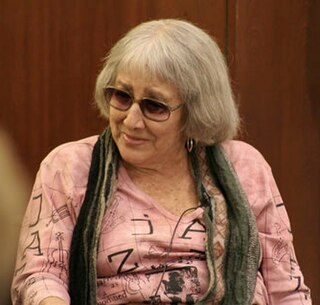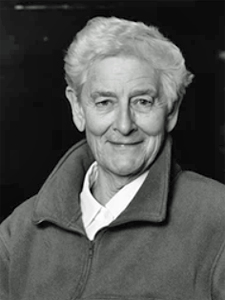Related Research Articles

Brackish water, sometimes termed brack water, is water occurring in a natural environment that has more salinity than freshwater, but not as much as seawater. It may result from mixing seawater and fresh water together, as in estuaries, or it may occur in brackish fossil aquifers. The word comes from the Middle Dutch root brak. Certain human activities can produce brackish water, in particular civil engineering projects such as dikes and the flooding of coastal marshland to produce brackish water pools for freshwater prawn farming. Brackish water is also the primary waste product of the salinity gradient power process. Because brackish water is hostile to the growth of most terrestrial plant species, without appropriate management it is damaging to the environment.

Cyprinodontiformes is an order of ray-finned fish, comprising mostly small, freshwater fish. Many popular aquarium fish, such as killifish and live-bearers, are included. They are closely related to the Atheriniformes and are occasionally included with them. A colloquial term for the order as a whole is toothcarps, though they are not actually close relatives of the true carps – the latter belong to the superorder Ostariophysi, while the toothcarps are Acanthopterygii.

Biogeography is the study of the distribution of species and ecosystems in geographic space and through geological time. Organisms and biological communities often vary in a regular fashion along geographic gradients of latitude, elevation, isolation and habitat area. Phytogeography is the branch of biogeography that studies the distribution of plants. Zoogeography is the branch that studies distribution of animals. Mycogeography is the branch that studies distribution of fungi, such as mushrooms.

Eugenie Clark, popularly known as The Shark Lady, was an American ichthyologist known for both her research on shark behavior and her study of fish in the order Tetraodontiformes. Clark was a pioneer in the field of scuba diving for research purposes. In addition to being regarded as an authority in marine biology, Clark was popularly recognized and used her fame to promote marine conservation.

Rosa Smith Eigenmann was an American ichthyologist, as well as a writer, editor, former curator at the California Academy of Sciences, and the first librarian of the San Diego Society of Natural History. She "is considered the first woman ichthyologist in the United States." Eigenmann was also the first woman to become president of Indiana University's chapter of Sigma Xi, an honorary science society. She authored twelve published papers of her own between 1880 and 1893, and collaborated with her husband, Carl H. Eigenmann, as "Eigenmann & Eigenmann" on twenty-five additional works between 1888 and 1893. Together, they are credited with describing about 150 species of fishes.
Ethelwynn Trewavas was an ichthyologist at the British Museum of Natural History. She was known for her work on the families Cichlidae and Sciaenidae. She worked with Charles Tate Regan, another ichthyologist and taxonomist.

The dwarf pufferfish, also known as the Malabar pufferfish, pygmy pufferfish, or pea pufferfish, is a small freshwater pufferfish endemic to Kerala and southern Karnataka in Southwest India. They are popular in aquaria for their bright colours and small size. At a maximum length of 3.5 cm, dwarf pufferfish are one of the smallest pufferfish in the world. They closely resemble the related Carinotetraodon imitator, and the two can be difficult to distinguish. C. imitator was not recognised as a different species until 1999.
George Sprague Myers was an American ichthyologist who spent most of his career at Stanford University. He served as the editor of Stanford Ichthyological Bulletin as well as president of the American Society of Ichthyologists and Herpetologists. Myers was also head of the Division of Fishes at the United States National Museum, and held a position as an ichthyologist for the United States Fish and Wildlife Service. He was also an advisor in fisheries and ichthyology to the Brazilian Government.

Geographic Information Systems (GIS) has become an integral part of aquatic science and limnology. Water by its very nature is dynamic. Features associated with water are thus ever-changing. To be able to keep up with these changes, technological advancements have given scientists methods to enhance all aspects of scientific investigation, from satellite tracking of wildlife to computer mapping of habitats. Agencies like the US Geological Survey, US Fish and Wildlife Service as well as other federal and state agencies are utilizing GIS to aid in their conservation efforts.

The UPLB Limnological Research Station traces its root from the Department of Entomology, of the then UP College of Agriculture. Since its conception, the station contributed immensely to the understanding of the bounties of Laguna de Bay and helped establish the duck farming industry on Los Baňos foreshores and pioneered in aquarium fish production in the country. It serves as the base for studies on limnology and biology of aquatic organisms aimed at developing strategies for the optimum utilization and sustained production of aquatic resources; developing, adapting or improving conventional technologies used to increase fish production; and promoting environment friendly approaches for effective water management.

Ida May Mellen (1877–1970) was an American ichthyologist and biologist. She worked at the New York Aquarium from 1916 to 1929.
The following outline is provided as an overview of and topical guide to fish:

Rosemary Helen Lowe-McConnell was an English ichthyologist, ecologist, and limnologist known for research on tilapia and aquaculture. Working in the tropical waters of Africa and South America, Lowe-McConnell was a pioneer in the study of tropical fish ecology and an early adopter of the use of scuba diving for scientific research.

Grace Evelyn Pickford was an American biologist and endocrinologist, known for "devising ingenious instruments and techniques" and her work on the hematology and endocrinology of fishes.
Tyson Royal Roberts is an American ichthyologist. He has been described as "the world's foremost authority on Regalecus".

Vicki Ann Funk was an American botanist and curator at the Smithsonian's National Museum of Natural History, known for her work on members of the composite family (Asteraceae) including collecting plants in many parts of the world, as well as her synthetic work on phylogenetics and biogeography.

Roger Lansing Grande, more commonly known as Lance Grande, is an evolutionary biologist and curatorial scientist. His research and work is focused on Paleontology, Ichthyology, Systematics and Evolution. He is best known for his work on the paleontology of the Green River Formation and for his detailed monographs on the comparative anatomy and evolution of ray-finned fishes.
Franz Xaver Alfred Johann Schilder was an Austrian-born German biologist, taxonomist, malacologist and honorary professor of animal geography.
Maria Schilder, née Hertrich was a German malacologist and chemist. Along with her husband, Franz Alfred Schilder, she systematized molluscs having produced over 250 scientific papers, most on the living and fossil Cypraeidae, or cowries.

The orangefin tetra is a small species of freshwater fish from South America that belongs to the family Iguanodectidae. Though common in its native range, it seems to prefer fast-flowing and shallow creeks. It is an active swimmer that feeds on plant material and various invertebrates, sometimes jumping out of the water to catch prey above the surface.
References
- ↑ Tropical Fish Hobbyist. Vol. 43, Issues 9-10. T.F.H. Publications. 1995. p. 198.
- ↑ Joel Shurkin, "Science and Culture: How fish innards inspire art". Proceedings of the National Academy of Sciences vol. 113 no. 15 3906–3907, doi: 10.1073/pnas.1603286113
- 1 2 Perry, M.C.; Bond, C.S.; Lohnes, E.J.R. "Lynne R. Parenti". Washington Biologists' Field Club. USGS Patuxent Wildlife Research Center. Retrieved 13 April 2015.
- ↑ David Alderton (15 May 2012). Livebearers: Understanding Guppies, Mollies, Swordtails and Others. i-5 Publishing LLC. pp. 26–. ISBN 978-1-62008-006-1.
- 1 2 John A. Dawes (1 May 1988). A practical guide to keeping freshwater aquarium fishes. Exeter Books. p. 138. ISBN 978-0-671-09309-9.
- ↑ Dennis McCarthy (9 June 2011). Here Be Dragons: How the study of animal and plant distributions revolutionized our views of life and Earth. OUP Oxford. pp. 111–. ISBN 978-0-19-161973-1.
- ↑ John Dawes (2001). Complete Encyclopedia of the Freshwater Aquarium. Firefly Books. pp. 262–. ISBN 978-1-55297-544-2.
- ↑ "Google Scholar Report"
- ↑ "Book Review:Cladistic Biogeography — Interpreting Patterns of Plant and Animal Distributions (2nd edn)". Heredity (1999) 83, 501–501; doi:10.1038/sj.hdy.6886243
- ↑ "Smithsonian Women Scientists: Dr. Lynne Parenti, Ichthyologist (NMNH)". Harvard-Smithsonian Center for Astrophysics. Harvard-Smithsonian Center for Astrophysics. Retrieved 13 April 2015.